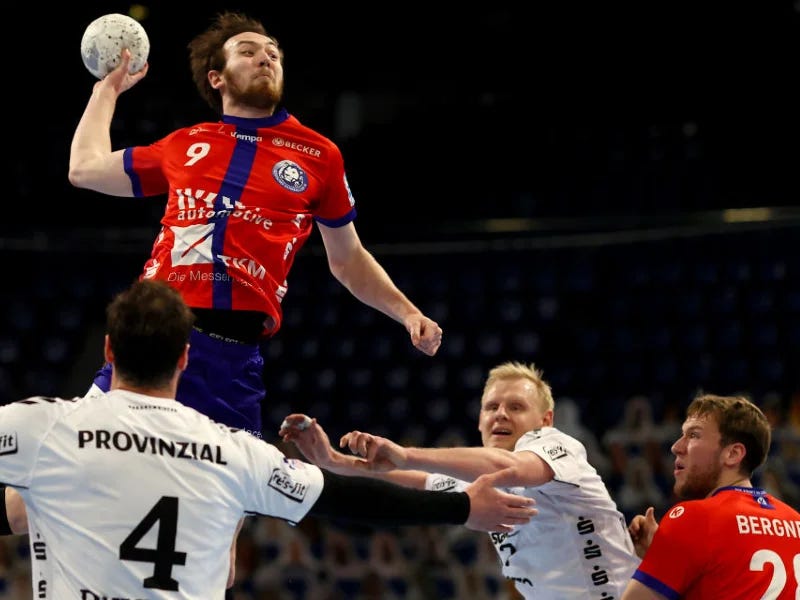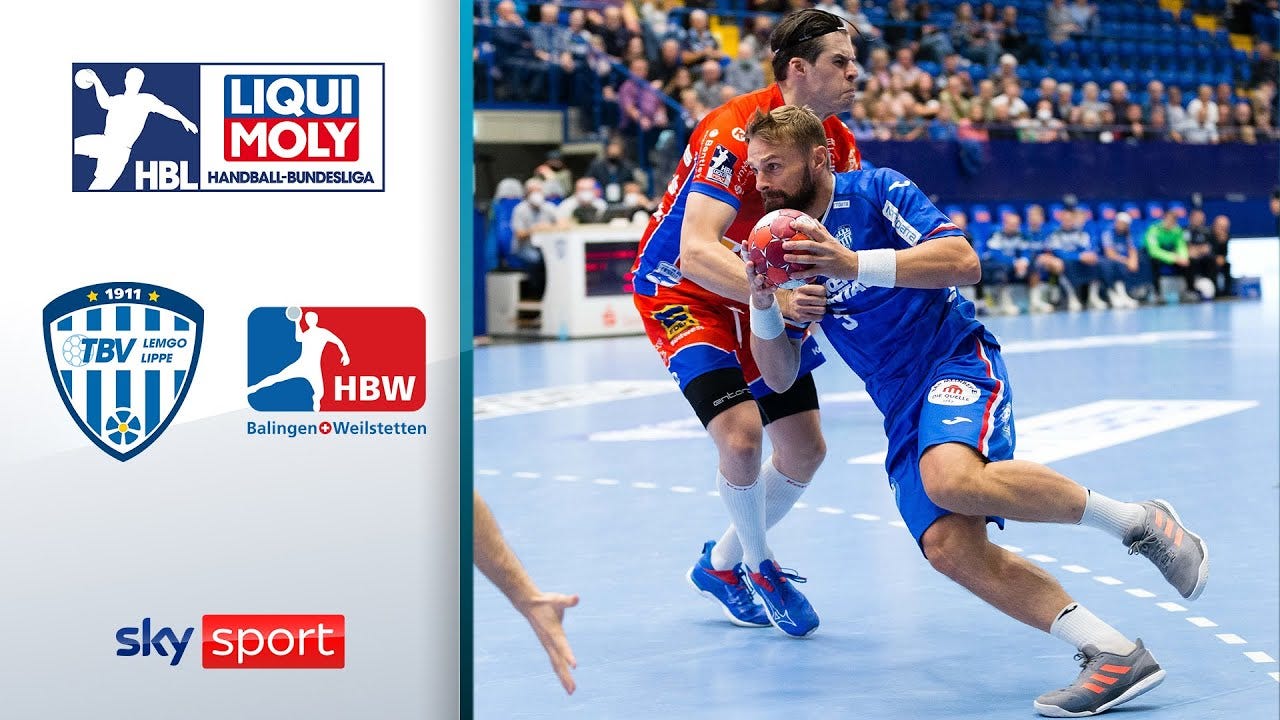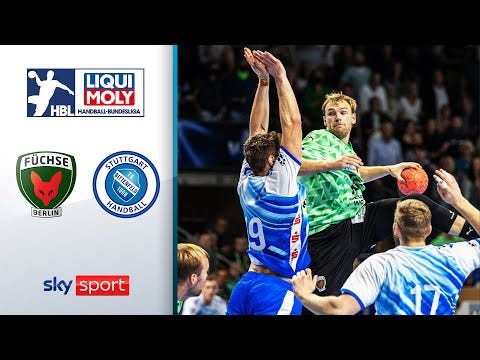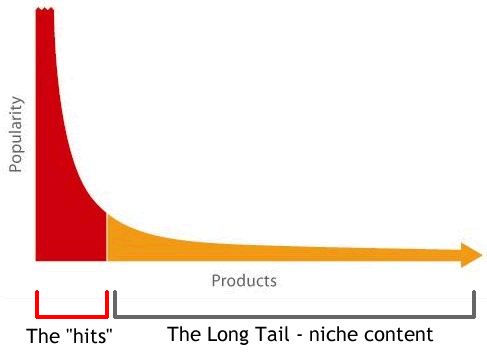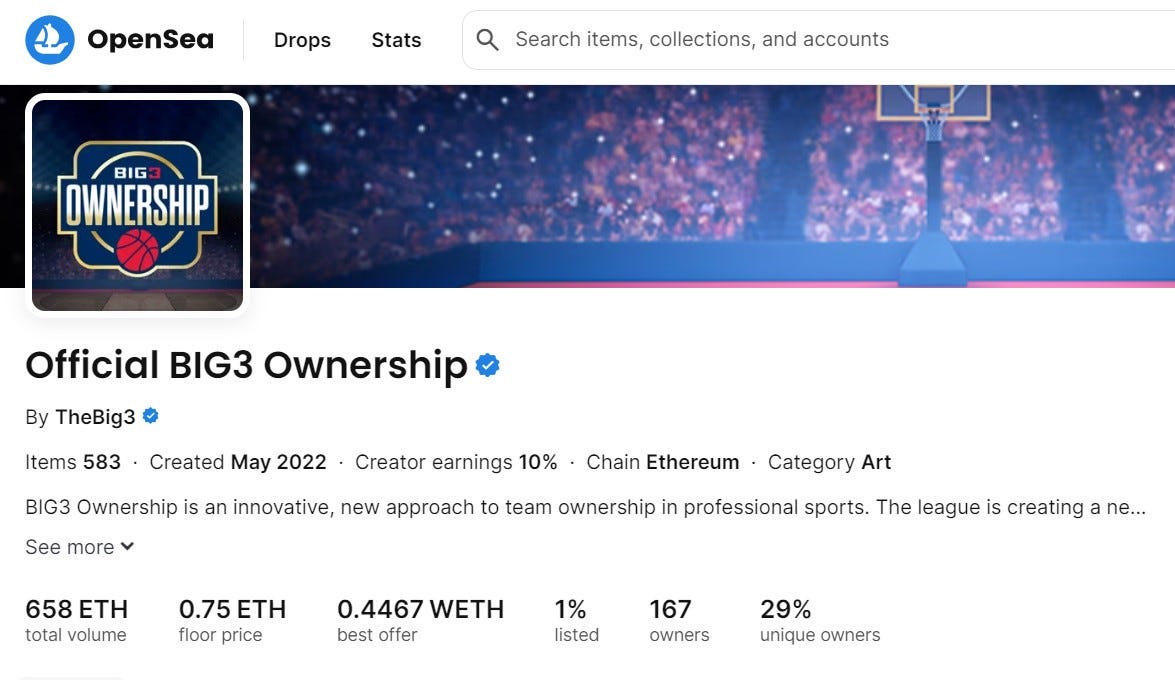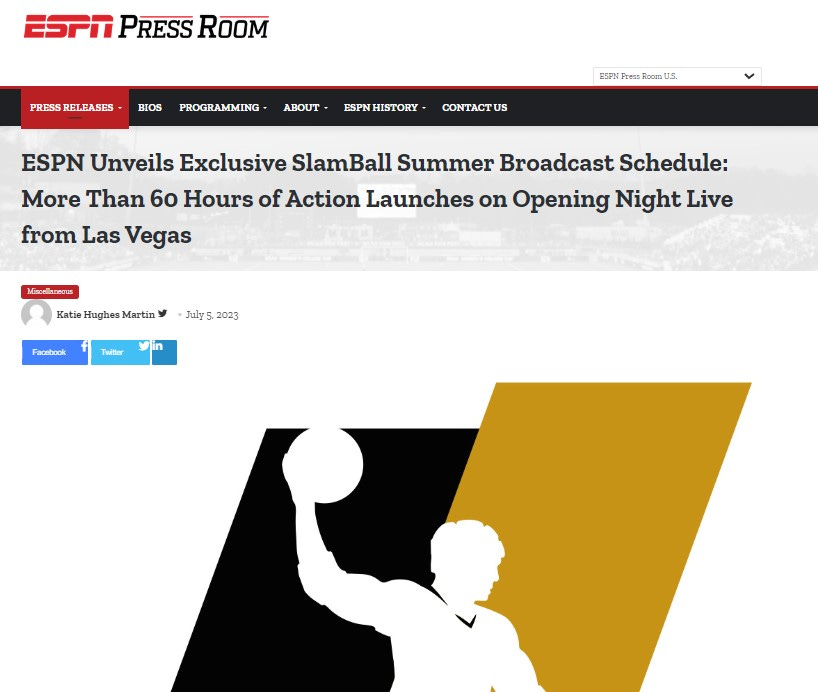Building Success in Niche Sports - The Handball-Bundesliga Case Study
A blueprint for entrepreneurs carving out new niches in sport
In this article:
The Handball-Bundesliga (HBL) presents a successful model for emerging niche sports leagues aiming to thrive in the global sports landscape.
With a staggering value of $1.3 trillion, the global sports industry showcases the massive economic potential. Within this scope, HBL's niche focus yields an impressive $100 million in revenue, demonstrating that substantial success is achievable even in niche sports.
This case study delves into the strategies that propelled the HBL's triumph, offering actionable insights for sports entrepreneurs and investors seeking to replicate its achievements.
The HBL's compact model, boasting less than 20 teams with an average attendance of 5,000, underscores the latent potential within niche markets, challenging other niche sports leagues to tap into their unique audience.
The global sports industry is an economic behemoth, with a value of $1.3 trillion. In the midst of this colossal domain, the HBL, or Handball-Bundesliga, emerges as a testament to the power of niche sports. With the broader professional sports sector raking in $650 billion last year, the HBL's impressive $100 million revenue demonstrates that even in a niche sport, substantial success is attainable. This case study dissects the strategies behind the HBL's triumph and offers actionable insights for sports entrepreneurs and investors striving to replicate such achievements.
Unlocking the Niche Potential
While mainstream sports like football and basketball dominate, the HBL's triumph underscores the latent potential in niche markets. The HBL's compact yet impactful model, featuring less than 20 teams with an average attendance of 5,000, has successfully harnessed the economic power of its passionate fan base. This revelation serves as a guiding light for other niche sports leagues aiming to harness the enthusiasm of a specific audience.
The Global Handball Landscape
According to the International Handball Federation (IHF), handball boasts a massive global community, with around 30 million players encompassing both recreational and competitive levels. Europe particularly adores handball, embracing it as a major team sport. This fervor extends across continents, reaching South America, Africa, and Asia. The IHF, with its 209 member federations, represents over 130,000 clubs and nearly 800,000 teams. The most robust professional handball leagues flourish in countries like Denmark, Norway, Germany, France, and Spain. Among professional players, the top 25 highest-paid contracts range from €1.8 million to €425,000. In terms of the global market, handball's professional sector is estimated at $1.5 billion, driven primarily by sponsorship, broadcast rights, and ticket sales.
The Financial Triumph of the HBL
The German Handball Federation's 2022 report reveals that the HBL achieved a remarkable total revenue of €80 million (approximately $90 million) during the 2021-22 season. This financial success story is built upon a diverse income structure: €40 million from TV rights, €25 million from sponsorships, €10 million from ticket sales, and €5 million from other sources. With an operating profit of €10 million, the HBL showcases how smart financial management can yield substantial returns.
The Essence of the Handball-Bundesliga
The Handball-Bundesliga, founded in 1966, stands as Germany's premier professional handball league, housing 18 teams. Its matches are broadcast live on Sky Sport and HBL TV. THW Kiel, with a staggering 23 league titles, leads the HBL's success trajectory. Yet, while the league generates an impressive annual revenue of approximately €100 million, it is crucial to recognize that this figure still trails behind the earnings of major European sports leagues such as Germany's Bundesliga in football and Spain's La Liga in football.
Unveiling the Income Streams
The HBL navigates its financial course through four primary revenue streams:
1. Media Rights: A dominant contributor, this revenue source arises from selling broadcasting rights to television and streaming platforms, encompassing around 50% of total income.
2. Sponsorships: Approximately 30% of the HBL's revenue originates from sponsorships. This symbiotic partnership involves companies associating their brands with the league.
3. Ticket Sales: This stream, accounting for 15% of total revenue, emerges from the sale of match tickets, enhancing fan engagement and stadium attendance.
4. Other Sources: Generating about 5% of total revenue, this category includes merchandise sales, licensing fees, and fines.
Emulating Success Across Niches
Although the HBL's income streams mirror those of other professional sports leagues, its financial scales are relatively smaller due to handball's narrower popularity compared to football or basketball. The league, however, strives to augment its revenue through the expansion of media rights, increased sponsorships and amplified ticket sales. Foraying into e-sports and fantasy sports, it embraces novel avenues of growth.
Expanding Viewership and Engagement
The HBL elevates its stature through compelling live broadcasts on Sky Sport and HBL TV, capturing an average TV viewership of 200,000 for the 2021-22 season. The zenith arrived during the final match between THW Kiel and SC Magdeburg, which drew an average TV viewership of 1.2 million. This exemplifies the potent combination of engaging content and strategic broadcast partnerships.
Prestigious Brand Endorsements
The league's top-tier sponsors, including Daikin, Mercedes-Benz, and Coca-Cola, reflect its global significance. Daikin's prominence on the jerseys of all HBL teams and Mercedes-Benz's role as the official automotive partner illustrate the league's magnetism for major international brands.
Cultivating Attendance and Virtual Fandom
With an average attendance of 5,000 fans per match during the 2021-22 season, the HBL thrives on the fervor of in-person experiences. The pinnacle of attendance was witnessed in the final between THW Kiel and SC Magdeburg, attracting a crowd of 15,000. The HBL continues to foster growth by enhancing the match quality and enriching fan engagement through media, social platforms, and even e-sports.
The Journey of TV Viewership
Though the HBL's TV viewership is dwarfed by the likes of the English Premier League, which averages 10 million viewers per match, its steady upward trajectory is noteworthy. This progression underscores the importance of consistent broadcasting efforts and strategic partnerships, hallmarks that niche sports leagues can emulate to expand their reach and visibility.
Global Sponsors: A Testament to Value
The league's roster of international sponsors underscores its global resonance. The presence of major international brands within the HBL's sponsorship portfolio signifies its status as a fertile ground for marketing endeavors.
Attendance in Parallel with European Norms
The HBL's average annual attendance, akin to other European professional handball leagues such as the French LNH, stands at 5,000 fans per match. The anticipation is that these numbers will burgeon as the HBL continues its ascendancy, capitalizing on growing popularity and fan engagement initiatives.
Valuation and Future Prospect
Assessing the valuation of HBL teams is intricate due to the paucity of publicly available data. However, estimates based on performance, sponsorship revenue, and stadium attendance position THW Kiel at the forefront with a valuation of €100 million. High-value valuations also extend to SC Magdeburg (€80 million), SG Flensburg-Handewitt (€60 million), and HSG Wetzlar (€50 million). The league's surging popularity augurs well for the future, and team valuations are likely to follow suit.
A Roadmap for Success: Replicating the HBL Model
Unveiling the Blueprint: 10 Steps of Niche Sports Success
1. The Untapped Niche Power
The global stage is vast, but niche markets hold the potential for success that transcends size. Amid the dominance of football and basketball, the Handball-Bundesliga underscores the viability of catering to a dedicated, albeit smaller, fan base. This revelation challenges entrepreneurs to recognize untapped demand and capitalize on it, tailoring their offerings to a passionate audience.
2. Financial Mastery through Diversification
The Handball-Bundesliga's financial sustainability arises from diversifying revenue streams. By leveraging media rights, sponsorships, ticket sales, and other avenues, the league creates a financial cushion. Niche sports leagues can emulate this strategy by meticulously identifying revenue sources that resonate within their market, ensuring resilience against overdependence on any one stream.
3. Digital Engagement for Fan Allegiance
The HBL's mastery of digital engagement highlights the importance of technology in fan relationships. Niche sports leagues must embrace social media's interactive potential, fostering e-sports integration to connect with the modern audience. The key lies in building a devoted community through consistent online interaction.
4. Brand Partnerships: Elevating the League
Strategic partnerships validate a league's worth, a principle vividly demonstrated by the HBL's global sponsors. This not only infuses revenue but also underlines the league's value as a marketing platform. Niche sports leagues should prioritize aligning with brands that mirror their ethos and cater to their audience, forging symbiotic partnerships that boost recognition and financial inflow.
5. Crafting Excellence: On-Field and Off
Balancing on-field prowess with an exhilarating matchday experience is pivotal. This synergy boosts fan loyalty, nurtures sponsor interest, and amplifies attendance. Niche sports leagues must mirror this approach by investing in both the caliber of play and in-person fan engagement, ensuring an unforgettable experience for supporters.
6. Steady Ascent and Flexibility
The HBL's gradual ascent underscores the virtue of steady growth. Niche sports leagues should internalize this lesson, shaping realistic growth expectations while remaining adaptable to evolving trends. The potential for diversification through e-sports and fantasy sports provides avenues to cater to new audiences and stimulate growth.
7. Amplifying Viewership and Presence
While the HBL's TV viewership may not match major leagues, its consistent increase offers an invaluable lesson. Niche sports leagues should forge partnerships with broadcasters and streaming platforms to extend their reach. Simultaneously, enhancing the in-stadium experience can trigger greater attendance, creating an electric atmosphere for fans.
8. Global Alliances: Sponsors and Partnerships
The league's international sponsors emphasize global appeal. Niche sports leagues must emphasize their value proposition to attract sponsors aligning with their niche audience. Collaborating with media partners further magnifies exposure, enhancing viewership and recognition.
9. Analytics-Driven Decision Making
Data-driven decision-making is pivotal, evident in the HBL's financial reports and focus on key revenue sources. Niche sports leagues should invest in data analytics to decipher their audience, unearth growth opportunities, and fine-tune strategies, enabling calculated progress.
10. Nurturing Long-Term Vision
The HBL's triumph stems from its long-term vision. Niche sports leagues should emulate this patience, recognizing that steady growth and brand establishment demand time and persistence.
The Handball-Bundesliga doesn't just represent a sports league; it embodies a blueprint for emerging niche sports looking to thrive on the global stage. By embracing a diverse range of revenue strategies, harnessing the power of digital platforms, fostering strategic partnerships, elevating the fan experience, and pursuing consistent growth, niche sports leagues can effectively replicate and customize the HBL's triumphant journey.
While birthing a new sporting ecosystem is an endeavor of its own, the foundational principles drawn from the HBL's experience shine as guiding beacons for unleashing potential and navigating a successful path in the realm of niche sports. This path is rooted in unwavering long-term commitment and a strategic roadmap that extends far beyond the initial founders' involvement.




